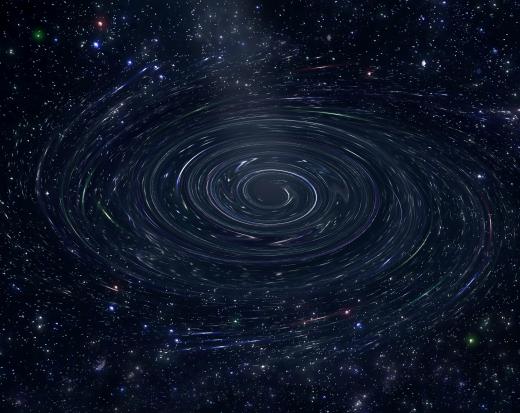What is a Quasar?
 Michael Anissimov
Michael Anissimov
Quasars (QUASi-stellAR radar sources) are gigantic luminous bodies between 780 million and 13 billion light years away, and correspondingly old. They are thought to be active galactic nuclei containing a central supermassive black hole. The brightest quasars are 2 trillion times brighter than our sun, or about 100 Milky Way galaxies. Their light output is continuous but can fluctuate in intensity on timescales of years, months, weeks, days or even hours, suggesting that they are quite dense.
Even as recently as the 1980s, there was significant disagreement among astrophysicists as to what quasars really are. A scientific consensus emerged when some quasars were found to be surrounded by galaxies, originating the active galactic nucleus theory. It has been calculated that, to generate the amount of light that they do, quasars must be powered by supermassive black holes that swallow between 10 and 1000 solar masses per year. In the accretion disc of such a black hole, superheated gases are accelerated to close to the speed of light, releasing tremendous amounts of electromagnetic waves as large portions of the mass is converted directly to energy. In such discs, about 10% of matter is converted to energy, in contrast to only 0.7% of the mass being converted to energy in fusion reactions within typical stars.

Quasars are believed to emit relativistic jets from their rotational poles, like their smaller cousins the pulsars. In 1979 quasars were used to confirm Einstein's theory of relativity, by observations of gravitational lensing effects as the quasar light traveled to the Earth. While at first it was thought that all quasars are "radio-loud" prompting their label as radio sources, subsequent observations revealed that only a minority (about 10%) of quasars emit copious radio energy. "Radio-quiet" quasars are referred to as QSOs (quasi-stellar objects), and play an extremely important role in studies of the early universe and how stars and galaxies first formed.

Early structures such as quasars might be interpreted as the "birth pangs" of galaxies. In the early universe, gases were more evenly distributed, so a newly formed black hole would have ample opportunities to suck in surrounding matter. Our own supermassive black hole at the center of the Milky Way, for instance, contains about 3.7 million solar masses, even though it started with much less mass than this. It has been busy sucking up other stars for billions of years, but the most intense stellar consumption probably occurred during its early history. This explains why we don't see any quasars in the modern universe but they are easily observable in older regions.
AS FEATURED ON:
AS FEATURED ON:












Discussion Comments
Quasars are simply feeding galaxies. They are a natural part of the self-balancing mechanism of the universe. If you understood em energy and the universal process, you would know why that which you call quasars are not observed closer to us. Do you even know why they appear so bright?
I thought once black holes "filled up" they became Quasars, shooting out some of the matter they consumed at both ends.
@gifted6tulip – I’m not certain what it is your asking but from what has been discovered, the other 90% appear radio quiet. Or their electromagnetic radiation emits at such a low level it is undetected.
The theory behind this is that they may be linked to smaller black holes or in areas of space where there is less matter to consume.
If only 10% of quasars are radiofrequency emitting objects in space, what is the frequency of electromagnetic radiation that the other 90% of quasars emit that is detected here on earth?
Quasar astrophysics is really a fussy science...right?? no one really knows or understands this area of electromagnetic radiation hitting the earth from outer space, do they?
Post your comments